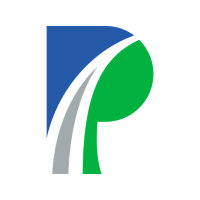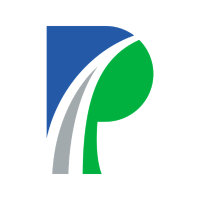
Parkland Corp
TSX:PKI


| US |

|
Johnson & Johnson
NYSE:JNJ
|
Pharmaceuticals
|
| US |

|
Berkshire Hathaway Inc
NYSE:BRK.A
|
Financial Services
|
| US |

|
Bank of America Corp
NYSE:BAC
|
Banking
|
| US |

|
Mastercard Inc
NYSE:MA
|
Technology
|
| US |

|
UnitedHealth Group Inc
NYSE:UNH
|
Health Care
|
| US |

|
Exxon Mobil Corp
NYSE:XOM
|
Energy
|
| US |

|
Pfizer Inc
NYSE:PFE
|
Pharmaceuticals
|
| US |

|
Palantir Technologies Inc
NYSE:PLTR
|
Technology
|
| US |

|
Nike Inc
NYSE:NKE
|
Textiles, Apparel & Luxury Goods
|
| US |

|
Visa Inc
NYSE:V
|
Technology
|
| CN |

|
Alibaba Group Holding Ltd
NYSE:BABA
|
Retail
|
| US |

|
JPMorgan Chase & Co
NYSE:JPM
|
Banking
|
| US |

|
Coca-Cola Co
NYSE:KO
|
Beverages
|
| US |

|
Walmart Inc
NYSE:WMT
|
Retail
|
| US |

|
Verizon Communications Inc
NYSE:VZ
|
Telecommunication
|
| US |

|
Chevron Corp
NYSE:CVX
|
Energy
|
Utilize notes to systematically review your investment decisions. By reflecting on past outcomes, you can discern effective strategies and identify those that underperformed. This continuous feedback loop enables you to adapt and refine your approach, optimizing for future success.
Each note serves as a learning point, offering insights into your decision-making processes. Over time, you'll accumulate a personalized database of knowledge, enhancing your ability to make informed decisions quickly and effectively.
With a comprehensive record of your investment history at your fingertips, you can compare current opportunities against past experiences. This not only bolsters your confidence but also ensures that each decision is grounded in a well-documented rationale.
Do you really want to delete this note?
This action cannot be undone.

| 52 Week Range |
30.137
41.03
|
| Price Target |
|
We'll email you a reminder when the closing price reaches CAD.
Choose the stock you wish to monitor with a price alert.

|
Johnson & Johnson
NYSE:JNJ
|
US |

|
Berkshire Hathaway Inc
NYSE:BRK.A
|
US |

|
Bank of America Corp
NYSE:BAC
|
US |

|
Mastercard Inc
NYSE:MA
|
US |

|
UnitedHealth Group Inc
NYSE:UNH
|
US |

|
Exxon Mobil Corp
NYSE:XOM
|
US |

|
Pfizer Inc
NYSE:PFE
|
US |

|
Palantir Technologies Inc
NYSE:PLTR
|
US |

|
Nike Inc
NYSE:NKE
|
US |

|
Visa Inc
NYSE:V
|
US |

|
Alibaba Group Holding Ltd
NYSE:BABA
|
CN |

|
JPMorgan Chase & Co
NYSE:JPM
|
US |

|
Coca-Cola Co
NYSE:KO
|
US |

|
Walmart Inc
NYSE:WMT
|
US |

|
Verizon Communications Inc
NYSE:VZ
|
US |

|
Chevron Corp
NYSE:CVX
|
US |
This alert will be permanently deleted.
Parkland Corp
Parkland Corporation, a distinguished player in the fuel and convenience retail industry, stands out with its entrepreneurial spirit and strategic vision. With roots tracing back to its Canadian origins, Parkland has grown to become one of North America's and the Caribbean's largest independent marketers of fuel and petroleum products. This growth has been fueled by a series of calculated acquisitions and a deep understanding of the energy sector's dynamics. At the heart of Parkland's operations lies its robust network of retail, commercial, and wholesale channels, which enables the company to distribute an array of fuel products. Their retail locations, which include a diverse portfolio of well-known brands, cater to everyday consumers, providing both fuel and convenience store services, thus creating a loyal customer base and steady cash flow.
The company's profitability and growth are intricately linked to its strategic integration of supply, trading, and refining capabilities. By owning and operating refining assets, Parkland ensures a seamless and cost-effective supply chain, which allows it to maintain competitive pricing and margin stability. Beyond traditional fuel services, Parkland is tapping into evolving market opportunities, such as renewable fuel products, showcasing its adaptability to changing energy needs. Additionally, the company's expansion into adjacent markets, like convenience store offerings, enhances its revenue streams and customer engagement. This combination of strategic acquisitions, strong supply chain management, and diversification efforts exemplifies how Parkland continues to thrive, undertaking steps to remain resilient amid the ever-evolving energy landscape.

Parkland Corporation, a distinguished player in the fuel and convenience retail industry, stands out with its entrepreneurial spirit and strategic vision. With roots tracing back to its Canadian origins, Parkland has grown to become one of North America's and the Caribbean's largest independent marketers of fuel and petroleum products. This growth has been fueled by a series of calculated acquisitions and a deep understanding of the energy sector's dynamics. At the heart of Parkland's operations lies its robust network of retail, commercial, and wholesale channels, which enables the company to distribute an array of fuel products. Their retail locations, which include a diverse portfolio of well-known brands, cater to everyday consumers, providing both fuel and convenience store services, thus creating a loyal customer base and steady cash flow.
The company's profitability and growth are intricately linked to its strategic integration of supply, trading, and refining capabilities. By owning and operating refining assets, Parkland ensures a seamless and cost-effective supply chain, which allows it to maintain competitive pricing and margin stability. Beyond traditional fuel services, Parkland is tapping into evolving market opportunities, such as renewable fuel products, showcasing its adaptability to changing energy needs. Additionally, the company's expansion into adjacent markets, like convenience store offerings, enhances its revenue streams and customer engagement. This combination of strategic acquisitions, strong supply chain management, and diversification efforts exemplifies how Parkland continues to thrive, undertaking steps to remain resilient amid the ever-evolving energy landscape.
Strategic Review: Parkland announced a Board-led strategic review to explore value-maximizing options, including M&A, divestitures, or a sale of the company.
Q4 Earnings: Adjusted EBITDA in Q4 was $428 million, just under revised full-year guidance, with strong international performance offsetting refinery and US segment weakness.
Refinery Challenges: Refining segment EBITDA fell to $60 million from $106 million due to lower margins and an unplanned outage, but 2025 conditions are more constructive.
Cost Savings: Operating and MG&A costs were reduced by $50 million in 2024, with further savings and 1,500 position reductions targeted over the next 24 months.
Dividend Increase: Parkland raised its annual dividend by 3%, marking its 13th consecutive annual increase.
Balance Sheet: Leverage ratio rose to 3.6x, mainly due to lower refining margins and currency effects, but management expects to return to target range (2–3x) in 2025.
Guidance & Outlook: 2025 guidance unchanged; Q1 tracking ahead of prior year, and management remains confident in meeting full-year targets.





























